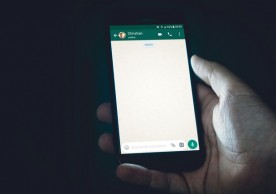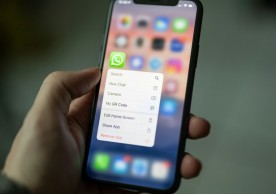Facebook Slingshot now official to challenge Snapchat – What makes it stand out?
Facebook Slingshot now official to challenge Snapchat – What makes it stand out?
Alexandra BurlacuAfter accidentally releasing its Snapchat competitor last week, Facebook is now officially launching its new Slingshot photo sharing app.
Facebook wanted to buy Snapchat for $3 billion, but hit a refusal, so it went ahead and developed its own ephemeral messaging service - the newly-launched Slingshot. Disappearing messages is what makes Slingshot similar to Snapchat, therefore a direct competitor, but Facebook also wanted to make its new service stand out from the crowd.
First of all, Slingshot encourages 100% interactions, requiring users to respond in order to see what others have shared. More specifically, if you want to see what one of your friends shared with you on Slingshot, you first have to "sling" something back.
"With Slingshot, we wanted to build something where everybody is a creator and nobody is just a spectator. When everyone participates, there's less pressure, more creativity and even the little things in life can turn into awesome shared experiences. This is what Slingshot is all about," reads the announcement.
This concept has stirred mixed reactions, with many seeing it as dumb to have to say something about what you've received before even getting a chance to see it. Nevertheless, that's the deal: you receive something, you respond in order to be able to see it, and you can then return to the photo/video you received to share your reaction. Whether it's a good or a bad thing remains to be seen, but that's what makes Slingshot stand out from the crowd.
When you're done with your friend's message, you can swipe it away and the photo or video in question will disappear forever. It's worth pointing out, however, that Slingshot sports another big difference, which may not be much appreciated. While Snapchat notifies you when someone takes a screenshot of the message you sent, Slingshot will do no such thing. This means that people can snap screenshot after screenshot, and the sender has no clue about it.
Moreover, while Snapchat caters to one-on-one conversations, the new Slingshot favors group interactions, allowing users to share photos and videos with multiple people at once.
"Photos and videos that don't stick around forever allow for sharing that's more expressive, raw and spontaneous. We can connect the same way we want to live: in the moment. We've enjoyed using Snapchat to send each other ephemeral messages and expected there to be a variety of apps that explore this new way of sharing. With Slingshot, we saw an opportunity to create something new and different: a space where you can share everyday moments with lots of people at once."
Slingshot is now available for download on iOS and Android, but only U.S. users have access to it for now. The service is expected to make a wider debut soon, but Facebook has yet to announce which other markets will get it and when.
most read
more stories from What's App
-
WhatsApp Beta Update Allows Direct Access to Meta AI via Search Bar
WhatsApp beta update unlocks direct access to Meta AI via search bar. Explore the latest features and streamline your messaging experience. Update now for enhanced functionality!
ernest hamilton -
WhatsApp Extends Video Status Length: Share More with 60 Seconds!
WhatsApp extends video status length to 60 seconds. Share more of your life's moments with friends and family. Update now for the latest feature!
ernest hamilton -
WhatsApp May Soon Extend Voice Message Transcription to Android Users
Big news for WhatsApp users! Voice message transcription may soon extend to Android. Stay tuned for enhanced messaging features.
ernest hamilton -
WhatsApp Introduces Profile Picture Privacy Feature, Blocking Screenshots
Privacy boost! WhatsApp introduces profile picture privacy feature, blocking screenshots. Safeguard your privacy with this latest update. Update now!
ernest hamilton -
WhatsApp Set for Game-Changing Update to Send Messages from Other Apps Directly
WhatsApp gears up for a game-changing update allowing users to send messages from other apps directly. Stay tuned for a revolutionary messaging experience.
ernest hamilton -
WhatsApp Channels Introduces 4 Exciting New Features for Better Interaction of Brands and Celebrities
Engage like never before! WhatsApp Channels unveils 4 exciting features for enhanced brand and celebrity interaction. Explore the future of messaging now!
ernest hamilton -
WhatsApp Boosts Experience: Share Original-Quality Photos, Videos
WhatsApp elevates your experience! Now share photos and videos in original quality. Enjoy enhanced sharing today!
ernest hamilton -
Google to Delete Dormant Accounts: How to Preserve Your Google Account
Google plans to delete dormant accounts. Learn how to preserve your Google account and safeguard your data.
ernest hamilton

















